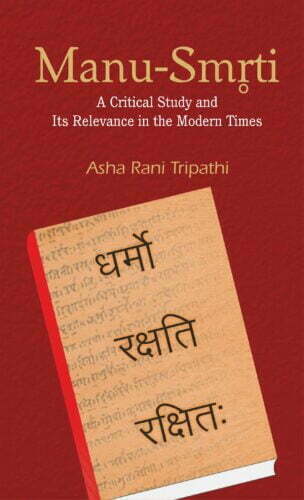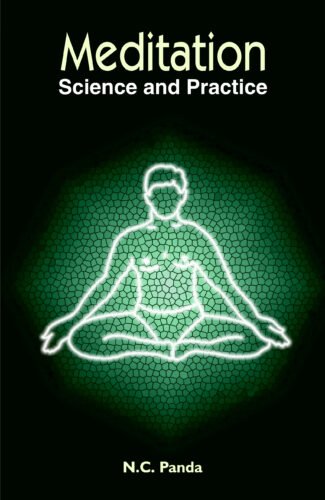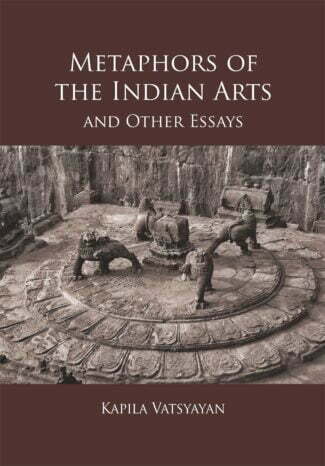Showing 181–190 of 384 results

The book discusses the main concepts of management that are to be found in Sanskrit literature, and attempts to study the usefulness of those Indian traditional values and principles in the formulation and adoption of modern-day management techniques a very useful book for scholars and students.
India has been known for long as the land of spirituality. Recent studies have brought out the depth of secular wisdom that is also embedded in the ancient Vedic and classical literature. Management Mantras is an attempt to bring about a synthesis between a modern subject like Management and one of the most ancient literatures of the world. In the words of Swami Mukundanandaji who has written the foreword, This book is like a treasure house of centuries of wisdom from the ancient Indian civilization speaking to us on the theme of Management Science. Whether one is questing for tips to hone ones managerial acumen, or searching for gems of practical wisdom in life, or merely an admirer of the Vedic culture, there is enough material in it to satisfy everyone.
The book touches upon all aspects of Management like Decision Making, Human Resource Development, Organizational Behaviour and Social Responsibility in 12 chapters. The discussions in each chapter are logically organized setting forth the principles of management at the outset, followed by corresponding references from texts like Arthasastra.
It is hoped that the book will interest scholars and students of Management and will be a useful addition to Libraries in Management schools as well as Humanities and Language Departments of Colleges and Universities.

In recent years mandalas have attracted much interest and the main focus of such interest has been directed towards Tibetan mandalas. But mandalas are found across a wide spectrum of South Asian religious traditions as well including those of the Hindus and Jains. Hindu mandalas and yantras have hardly been researched. This book attempts to fill this gap.
Mandalas and Yantras are used in rites of worship in a wide range of Hindu, Buddhist and Jaina religious traditions. This volume has scholarly articles that deal with the little-researched subject of mandalas and yantras in specific Hindu traditions-Smarta, Pancaratra, Shaiva and Shakta traditions. The articles discuss mandala-like arrangements and the navagrahamandala in the ritual practices of Smarta Brahmins in Maharashtra. Use of mantras and yantras in the Vaishnava Pancaratra tradition is studied on the basis of passages from the Samhitas. They concentrate on the Siddhanta school, pre-11th century Shaiva Mandalas expressing the link between branches of Shaivism and between Shaiva and non-Shaiva groups, and description of use of mandalas in Abhinavaguptas Tantraloka. The shricakra is explored as a cosmic than a ritual diagram which has immense religious/spiritual significance. A slightly different attempt examines application of vastumandala, as described in Varahamihiras Brihatsamhita, in temple architecture. Parallels are drawn between the rituals taken up here and others like Buddhist tantric initiation rites. The writings consult many religious texts including the Sharadatilaka, the 11th-century Yoginihridaya and the Svacchandatantra to understand mandala structure and rituals. A highlight of the volume is the inclusion of numerous reproductions of mandala designs and other drawings and extensive notes. The volume will be useful for Indologists studying Hindu religious traditions, particularly mystical rituals and rites of Vaishnava, Shaiva and Shakta traditions.

In recent years mandalas have attracted much interest and the main focus of such interest has been directed towards Tibetan mandalas. But mandalas are found across a wide spectrum of South Asian religious traditions as well including those of the Hindus and Jains. Hindu mandalas and yantras have hardly been researched. This book attempts to fill this gap.
Mandalas and Yantras are used in rites of worship in a wide range of Hindu, Buddhist and Jaina religious traditions. This volume has scholarly articles that deal with the little-researched subject of mandalas and yantras in specific Hindu traditions-Smarta, Pancaratra, Shaiva and Shakta traditions. The articles discuss mandala-like arrangements and the navagrahamandala in the ritual practices of Smarta Brahmins in Maharashtra. Use of mantras and yantras in the Vaishnava Pancaratra tradition is studied on the basis of passages from the Samhitas. They concentrate on the Siddhanta school, pre-11th century Shaiva Mandalas expressing the link between branches of Shaivism and between Shaiva and non-Shaiva groups, and description of use of mandalas in Abhinavaguptas Tantraloka. The shricakra is explored as a cosmic than a ritual diagram which has immense religious/spiritual significance. A slightly different attempt examines application of vastumandala, as described in Varahamihiras Brihatsamhita, in temple architecture. Parallels are drawn between the rituals taken up here and others like Buddhist tantric initiation rites. The writings consult many religious texts including the Sharadatilaka, the 11th-century Yoginihridaya and the Svacchandatantra to understand mandala structure and rituals. A highlight of the volume is the inclusion of numerous reproductions of mandala designs and other drawings and extensive notes. The volume will be useful for Indologists studying Hindu religious traditions, particularly mystical rituals and rites of Vaishnava, Shaiva and Shakta traditions.

In north India, from birth till marriage, various rites and rituals are being performed in a family. A variety of songs are being sung in Haryanvi, Marwadi and various other local dialects. This volume is a unique compilation of such songs.
In north India, from birth till marriage, various rites and rituals are being performed in a family. A variety of songs are being sung in Haryanvi, Marwadi and various other local dialects. This volume is a unique compilation of such songs.

The present book is an effort to bring together all scattered materials related to different topics contained in Manu-Smriti. The book also aims to diffuse many of the doubts related to certain topics contained in Manu-Smriti, such as status of brahmana, shudra and woman.
Manu-Smriti is one of the most coveted and popular works of ancient India. It comprises codes that are needed for an ideal, peaceful and harmonious society. The entire Manu-Smriti revolves around the Vedic concept of rita or dharma. The concepts of purusharthas, ashramas and varnas have their roots in dharma. These concepts were meant to make the life of every member of the society fruitful and purposeful. The codes prescribed by Manu became an authority on ancient laws and were put in practice. The scholars working in different fields of sociology, religion, philosophy, ethics, ancient laws and politics are bound to consult Manu-Smriti for some reason or the other.
The present book is an effort to bring together all scattered materials related to different topics contained in Manu-Smriti. The book also aims to diffuse many of the doubts related to certain topics contained in Manu-Smriti, for example, status of brahmana, shudra and woman. The analysis of topics such as human values, raja-dharma and Manus codes on crime and punishment has been presented in this book in a lucid style. All these topics bear great relevance even in modern times. The volume tries to maintain the originality of Manus concepts through rational and honest approach. The book also includes few modern subjects like economics, ecosystem management and biodiversity conservation that have been dealt by Manu in a scientific manner.
This book will benefit all those who want to know about the rules and practices that governed our ancient history, pertaining to all the aspects of human life.

India is a land where spiritual masters and mystics have blossomed from time to time, sharing their spiritual experience and knowledge for the benefit of all. This book throws light on a rarely-studied aspect of Indian spirituality, its women mystics and will be useful to all those interested in spirituality or in studying it as a subject.
India is a land where spiritual masters and mystics have blossomed from time to time, sharing their spiritual experience and knowledge for the benefit of all. They have explored a variety of spiritual, religious and philosophical dimensions to unravel the meaning of existence and significance of life. This book throws light on a rarely-studied aspect of Indian spirituality, its women mystics. The work is an account of the life of a master mystic, Shiva Yogini Amma, a woman who traversed new realms of experience in her spiritual quest. It is a record of her life from her birth to her attaining the nirvikalpa samadhi and after, and her teachings. It details the process of her spiritual realization; a unique experience exploring spiritual states with a foreknowledge and mastery. It explains her understanding of spiritual concepts relating to form and formlessness, maya, reality. It deals with her method of using the body and mind to attain the goals of the spirit. Based on one of her first woman disciples, Satyananda Yogini’s recollections, the account elaborates on life in Shiva Yogini Amma’s ashrama. It examines her growth as a samnyasin by delving into her daily activities, trances, interactions with disciples, and her teachings, particularly yoga instructions, to learners. The book will be useful to all those interested in spirituality or in studying it as a subject.

India is a land where spiritual masters and mystics have blossomed from time to time, sharing their spiritual experience and knowledge for the benefit of all. This book throws light on a rarely-studied aspect of Indian spirituality, its women mystics and will be useful to all those interested in spirituality or in studying it as a subject.
India is a land where spiritual masters and mystics have blossomed from time to time, sharing their spiritual experience and knowledge for the benefit of all. They have explored a variety of spiritual, religious and philosophical dimensions to unravel the meaning of existence and significance of life. This book throws light on a rarely-studied aspect of Indian spirituality, its women mystics. The work is an account of the life of a master mystic, Shiva Yogini Amma, a woman who traversed new realms of experience in her spiritual quest. It is a record of her life from her birth to her attaining the nirvikalpa samadhi and after, and her teachings. It details the process of her spiritual realization; a unique experience exploring spiritual states with a foreknowledge and mastery. It explains her understanding of spiritual concepts relating to form and formlessness, maya, reality. It deals with her method of using the body and mind to attain the goals of the spirit. Based on one of her first woman disciples, Satyananda Yogini’s recollections, the account elaborates on life in Shiva Yogini Amma’s ashrama. It examines her growth as a samnyasin by delving into her daily activities, trances, interactions with disciples, and her teachings, particularly yoga instructions, to learners. The book will be useful to all those interested in spirituality or in studying it as a subject.

Prof. Panda discusses the eight limbs of Patanjala Yoga, emphasizing on meditation in its three stages of dharana, dhyana and samadhi. Delving into Patnnjalis classical yogic theories, he gives detailed guidelines on the practice of meditation and explains in scientific terms the benefits surfacing from the practice of meditation.
Yoga, contrary to the popular perception, is not merely a system of physical culture. It is, in fact, a uniquely Indian discipline aiming to bring about the union of an individual spirit with the Universal Spirit: the Cosmic Consciousness through what in Yoga is known as samadhi, a state of profound meditation. Patanjalis Yoga-sutram, written sometime around the second century bc, is the first, systematic, at once authoritative presentation of Yoga: in both its theoretical and practical aspects. Professor N. C. Panda, who has had a lifetime involvement with the science and practice of Yoga, here outlines the eight limbs of Patanjala Yoga, with added emphasis on meditation in all its three stages: dharana, dhyana, and samadhi; and how this ancient system of bodily and mental control is found to have a strong scientific basis. Offered in three parts, his book focuses, in Part 1, on the practice of meditation, with detailed guidelines concerning the relevant yogic postures, yogic breathing and breath-control. Part 2 presents Patanjalis classical yogic theories, showing how these are validated: both theoretically and experimentally, by modern science. In Part 3, the author explains, in pure scientific terms, the physical, psychic, therapeutic and spiritual benefits surfacing from the practice of meditation. Though based on the principles of classical yoga, Professor Pandas book is truly a brilliant effort to treat Yoga as an advanced science. Including a comprehensive glossary of Sanskrit technical terms and numerous illustrations, it is invaluable to medical scientists/researchers/anyone interested in Yogic Meditation and how it can give a holistic, healthy and creative life.

Prof. Panda discusses the eight limbs of Patanjala Yoga, emphasizing on meditation in its three stages of dharana, dhyana and samadhi. Delving into Patnnjalis classical yogic theories, he gives detailed guidelines on the practice of meditation and explains in scientific terms the benefits surfacing from the practice of meditation.
Yoga, contrary to the popular perception, is not merely a system of physical culture. It is, in fact, a uniquely Indian discipline aiming to bring about the union of an individual spirit with the Universal Spirit: the Cosmic Consciousness through what in Yoga is known as samadhi, a state of profound meditation. Patanjalis Yoga-sutram, written sometime around the second century bc, is the first, systematic, at once authoritative presentation of Yoga: in both its theoretical and practical aspects. Professor N. C. Panda, who has had a lifetime involvement with the science and practice of Yoga, here outlines the eight limbs of Patanjala Yoga, with added emphasis on meditation in all its three stages: dharana, dhyana, and samadhi; and how this ancient system of bodily and mental control is found to have a strong scientific basis. Offered in three parts, his book focuses, in Part 1, on the practice of meditation, with detailed guidelines concerning the relevant yogic postures, yogic breathing and breath-control. Part 2 presents Patanjalis classical yogic theories, showing how these are validated: both theoretically and experimentally, by modern science. In Part 3, the author explains, in pure scientific terms, the physical, psychic, therapeutic and spiritual benefits surfacing from the practice of meditation. Though based on the principles of classical yoga, Professor Pandas book is truly a brilliant effort to treat Yoga as an advanced science. Including a comprehensive glossary of Sanskrit technical terms and numerous illustrations, it is invaluable to medical scientists/researchers/anyone interested in Yogic Meditation and how it can give a holistic, healthy and creative life.

This anthology is a selection of writings of Dr Kapila Vatsyayans nearly four-decade long journey as an art critic and art historian. It reveals the distinct nature of Indian arts from the angle of the world-view in which they emerge. At the same time, it amply shows the theory of art and aesthetics which may enable us to to see the other traditions of art from our own window.
This anthology Metaphors of the Indian Arts and Other Essays is a selection of writings of Dr Kapila Vatsyayans nearly four-decade long journey as an art critic and art historian. It reveals the distinct nature of Indian arts from the angle of the world-view in which they emerge. At the same time, it amply shows the theory of art and aesthetics which may enable us to to see the other traditions of art from our own window. In a seminal article entitled Metaphors of the Indian Arts, the author identifies some fundamentals which permeate the Indian artistic traditions.
In the article entitled Mountain, Myth, Monuments Dr Vatsyayan discusses the significance of mountains and the sanctuaries, diversity of attitude and approaches to them in Indian context. She focuses on sacred mountains, especially Kailasa, which have dominated the Indian imagination for many millennia in the world of literature, architecture, sculpture, music and dance.
The attitude to the human body as also the self-consciousness of the relationship of the senses and the mind in diverse civilizations has been of special interest to the author for decades. In the article Early Evidence of Female Figures, Music and Dance, she points at essentials of treating the human body in Indian art, specially the female body, over a long span of history. She draws attention to the large measure of consensus on the identification of meaning of the particular or single image or relief, ranging from the examples from Mesopotamia to Assyria to Egypt and the figurines and statues of the Indus Valley, Mohenjo-Daro, Harappa and Mehergarh.
Further she returns to explicitly stating the ideational background of Indian aesthetics. Finally, she identifies certain motifs which have travelled across a vast geographical area, specially in South-East Asia.
Altogether, these essays will enable the reader to trace not only her journey but also her place in Indian art history as a carrier of a tradition of A.K. Coomaraswamy and Stella Kramrisch.
| There are no products |